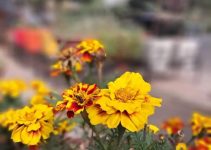Himalayan Blue Poppy (Meconopsis betonicifolia)
Himalayan blue poppy (Meconopsis betonicifolia)
About:
The Himaayan Blue Poppy (Meconopsis betonicifolia, now often reclassified as Meconopsis baileyi) is one of the most striking and sought-after flowering plants in the world. Famous for its vivid sky-blue petals, it’s native to the cool, high-altitude regions of the eastern Himalayas. In Tibet and Bhutan, it’s a revered native wildflower.
Botanical Classification:
- Family: Papaveraceae (the poppy family)
- Genus: Meconopsis
- Species: betonicifolia (or baileyi in newer classifications)
- Common Name: Himalayan Blue Poppy
Plant Description:
- Height: Typically 3 to 4 feet.
- Spread: Around 1 to 2 feet.
- Leaves: Fuzzy, lance-shaped, and light green
Flowers:
- Color: Intense sky blue, sometimes with a hint of violet
- Size: 3–4 inches
- Form: 4–6 delicate, papery petals with a golden yellow center
Natural Habitat:
- Found in cool, moist, alpine woodlands or meadows at elevations between 3,000 to 4,500 meters (9,800 to 14,800 feet).
- Prefers misty, shaded, and damp environments—conditions hard to replicate in many gardens.
Flowering Season:
- Blooms in late spring to early summer (May to July, depending on climate).
Reproduction
- Grown from seed, though germination is tricky.
- Some propagation is done by division of mature plants, though they dislike root disturbance.
Why it’s Difficult to Grow:
- Climate sensitivity: Needs cool, moist, and shaded conditions.
- Short lifespan in less-than-ideal climates.
- Seed dormancy and specific germination needs.
- Prone to rot if soil isn’t well-drained but kept moist.
Symbolism:
Considered a symbol of paradise or the unattainable due to its rarity and beauty.

